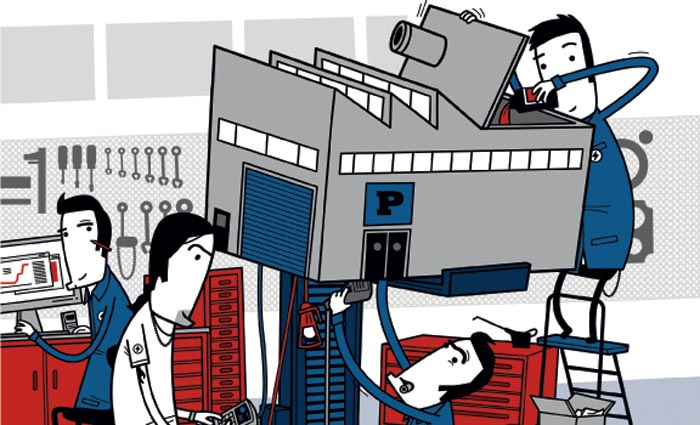

Too many printers still put their press before their customers, but a slavish focus on hardware isn’t healthy. It isn’t good for individual businesses, nor the industry as a whole.
We’re undergoing a huge change in the way people communicate. Print’s place in that media mix is evolving. In developed markets, volumes are declining and buyers want fewer copies and lower paginations. They are asking for their work on-demand and increasingly tailored, if not personalised.
Many in our industry came up through the ranks and are craftsmen first and businesspeople second. Back then, print was the media, and printers acted as gatekeepers. Times have changed.
Before investing, listen to each customer about their business and their communication needs. Find out about their sector, size and strategy and where you sit as a supplier. A picture should emerge of your specialisms. Cross-reference that with information about work you produce and how profitable – or unprofitable – it is. That might show up some serious gaps in business processes and in particular customer relationship management and management information systems. If so, the investment priority is to get clarity about what clients want and what you are good at. Use MIS to look at equipment utilisation and cost base.
Very few firms would find a lack of press capacity. If capacity isn’t an issue, focus effort on bottlenecks and areas of inefficiency that you have identified.
Newer, bigger presses are often not the solution. If the issue is shorter runs and quicker turnaround times, then there is need to handle more jobs. If the challenge is dealing with customers who lack specialist print knowledge, then there’s a need for customer service. Here, it is administration costs that threaten to swamp production costs.
Larger press formats, CTP and automated makeready all reduced production costs. Now the focus should be on automating the front end. Web-to-print, MIS, automated estimating, job splitting and routing – all these processes push software and workflow beyond the confines of pre-press and across the entire factory.
Implementing and upgrading software systems is not easy. But neither is it impossible. The terminology may be different but the ultimate aim is the same: improved efficiency and lower costs. Get as comfortable talking about KPIs (key performance indicators) as LPI (lines per inch). Many firms, particularly, I hear, in Australia, have grasped that the key to future success lies in these software systems. The challenge has moved from getting ink on paper to getting data on press and then finished print to the customer.
Then the biggest issue becomes knitting together disparate systems so that they talk to each other. Islands of automation can only go so far in driving efficiency.
The industry is, hopefully, losing its fetishism for heavy metal and shiny new kit. Even the machinery vendors have come to the party. They recognise their success relies on that of their customers. You may have heard of ‘business development tools’ – services that vendors will sell to printers to help them boost business in myriad ways. You might reject these on the grounds that “they’re just trying to sell me more stuff”. Yes, they are, but if those tools help you to be more successful, where’s the problem? There’s no such thing as a free lunch. Vendors have valuable sector knowledge and a vested interest in your success in the form of recurring revenues for service and supplies.
So go to Drupa with a clear idea of your business needs in the short, medium and long term. Whether your objectives are cost control, efficiency, quality, turnaround time, productivity or adding additional services.
Regardless of the upfront cost of a potential investment or whether it is hardware, software, services or skills, consider it in the same manner: return on investment. If you need a step-change in efficiency, to add capabilities or to increase capacity, then big capital investments are appropriate. A new machine is a sound buy if it has better ROI than alternative products, and as long as you can secure finance for it and any additional supporting investments, without overstretching the business.
Barney Cox is a senior consultant at InfoTrends Europe
Comment below to have your say on this story.
If you have a news story or tip-off, get in touch at editorial@sprinter.com.au.
Sign up to the Sprinter newsletter
